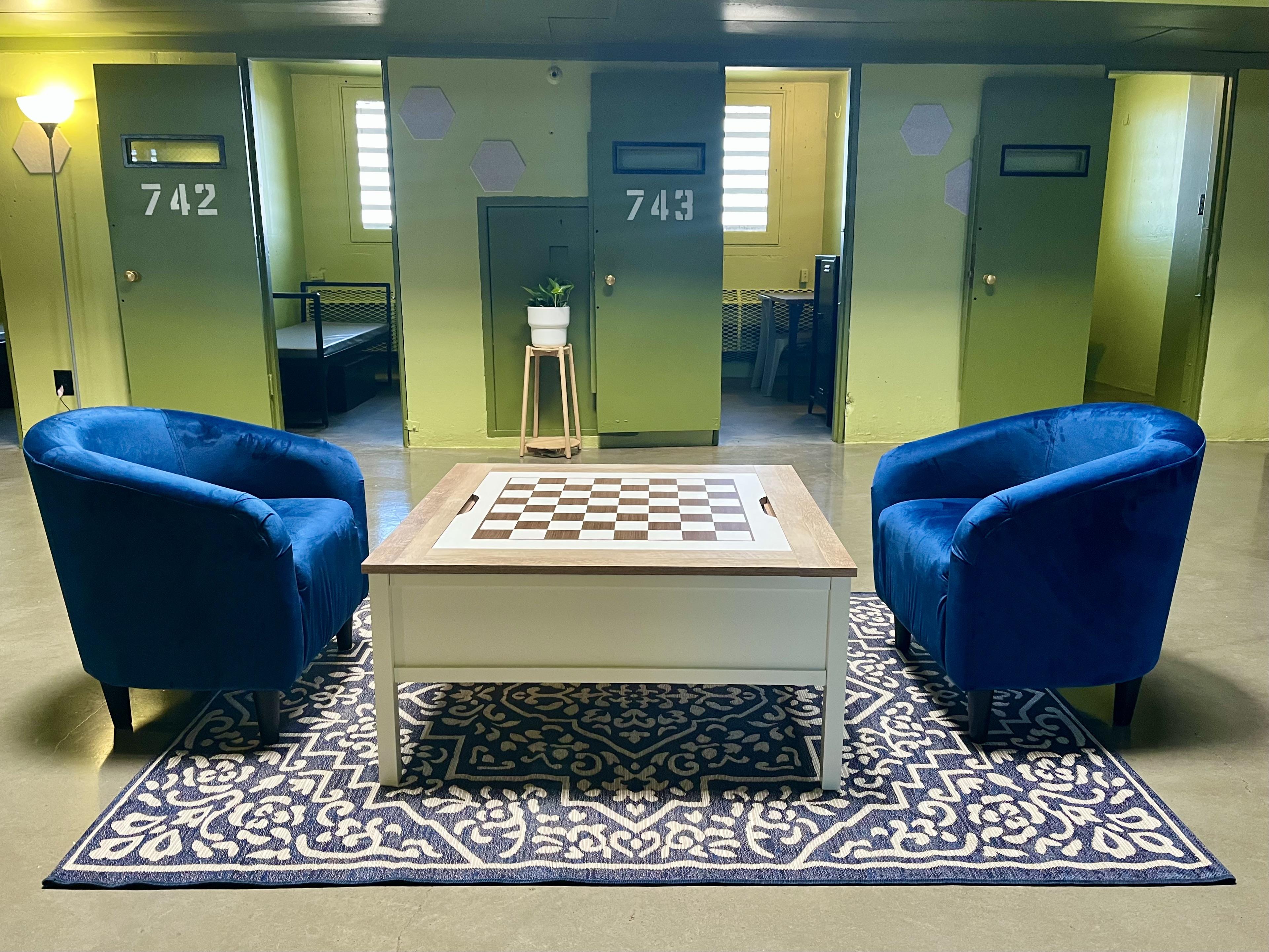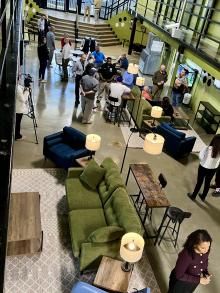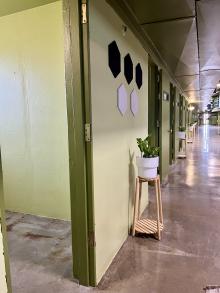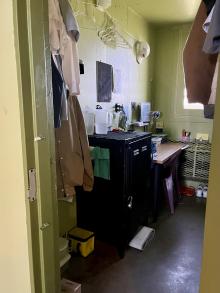The Missouri Department of Corrections and the University of Missouri have teamed up to rethink living spaces in prisons, thus improving the lives of residents and staff.

Story by Marcus Wilkins
A washing machine sloshes rhythmically while a resident pulls clothes from the dryer and watches ESPN highlights on a nearby flatscreen. Across the walkway lined with potted plants, a neon fish tank bubbles as two guys down the hall play a rousing round of ping-pong. Another laughs with a family member — via tablet app — while lounging on a moss-green sofa.
If this seems like a typical day among house mates, it’s supposed to.
Living Better

Thanks to a partnership between the Missouri Department of Corrections (MODOC) and the University of Missouri (MU), a housing unit at Moberly Correctional Center (MCC) has been transformed into a vibrant new living space. The program, known as the Missouri Prison Transformation Project (MPTP) — which is funded by a grant from the philanthropic group Arnold Ventures and founded upon evidence-based research from Western European prison models — seeks to improve the quality of life for people living and working in correctional institutions. MCC is the second of four facilities slated for the transformation. The first, Women’s Eastern Reception, Diagnostic & Correctional Center in Vandalia, opened its MPTP wing in March.
Among the project’s three core concepts is an enhanced sense of normalcy rooted in a belief that living in a more comfortable and modernized environment — in this case, one resembling a college dormitory common area — results in positive outcomes including better mental health and an overall boost in morale, for residents and staff.

“This gives you the feeling of a somewhat regular life before you get out, and something besides bars and a metal bed,” said an MCC resident. “If we can change even just a few residents — that’s winning.”
The housing unit features design input from staff, residents and administrators who chose the nature-evoking color scheme of greens and blues on the walls and furniture. There are dedicated spaces for reading, a coffee table that doubles as a chess/checkerboard and decorative fabric embellishments that dampen sound and promote calmness. The space also provides greater individual privacy, with 72 residents in one-person cells.
“We really wanted to design a space that brought about wellness from the perspective of people who are going to be living and working in this unit,” said Kelli Canada, a professor in the MU School of Social Work and the lead researcher on the project. “People emphasized quietness and elements of the outdoors, and we used a color wheel on which people placed dots in the shades that spoke to them.”
Working Better

Equally important to the MPTP are the overall effects on staff. Participating MODOC employees receive training to increase empathetic communication, humanizing language and professional rapport building.
“Nobody likes a negative atmosphere, and this wing is going to allow residents and staff to work in a positive environment,” said Steve Bailey, a correctional officer I (COI) at MCC. “That’s going to transfer to officers in other houses and allow residents throughout the facility to see the opportunity here.”
In addition to upgrades in the physical environment and staff training, the MPTP will also promote self-improvement. Residents will have opportunities to pursue individual goals and improve skills such as budgeting, meal preparation, professional skills and formal education.

“It’s the same as when you’re at home,” said COI Isaac Morlock. “When you’re in a calm, peaceful environment, you’re less stressed and you can think a bit more clearly. And there are a lot more interactive things for them to do inside the wing.
“In turn, that helps officers feel less stress during the day. We can actually get things done and build relationships with these guys and with our coworkers as well.”
Unlike other MODOC housing units with expanded privileges for residents who meet strict criteria — such as the Dynamo program at Northeast Correctional Center or the Honor Dorm at Algoa Correctional Center — the MPTP includes the general population. Canada and her team of researchers will study the participants over the next four years, including tracking the outcomes of former residents for 18 months after their release.
“We’re hoping to see a healthier work environment for staff and residents, as well as a reduction in conduct violations,” Canada said. “I’ve heard so many people say, ‘I can’t believe you convinced the Department of Corrections to do this project,’ but I didn't convince anyone! The DOC brought a number of these higher-level ideas to our research team and said ‘Let's think about these things together.’”
